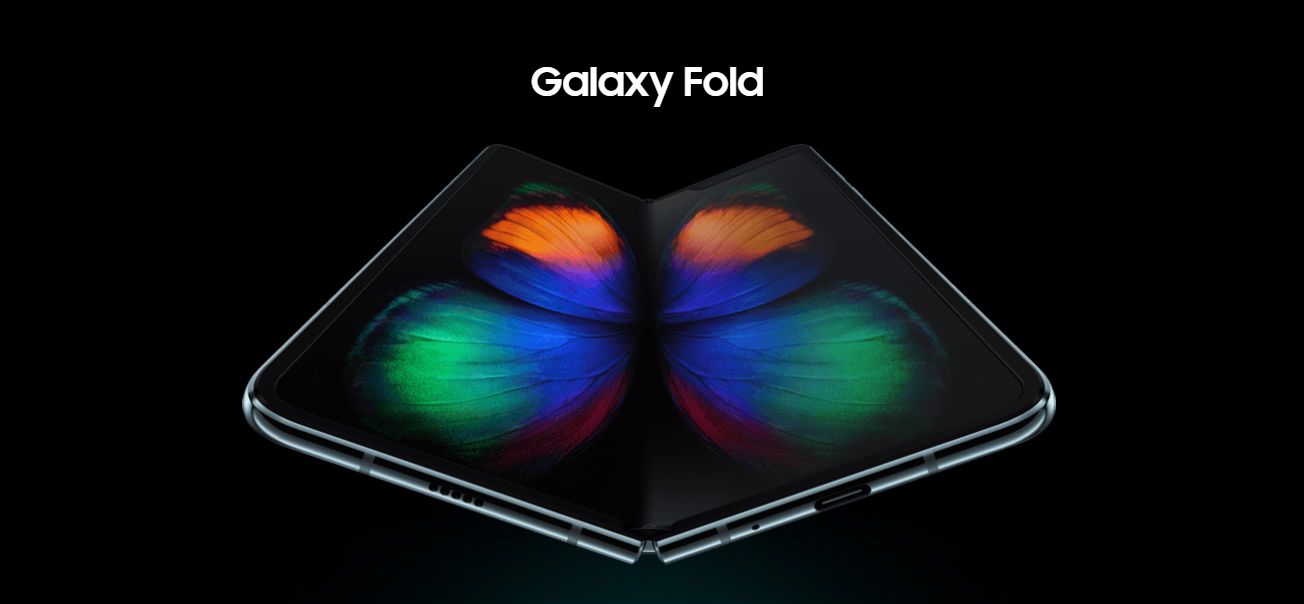Ernie Smith reports in Motherboard:
We went from big innovations to little ones. The apps on these devices have bled into our lives and solidified the final result. We don’t feel like the devices that we own have to be upgraded every five minutes anymore. As we go into 2020, smartphones look less innovative than ever, living on spec bumps rather than impressive new features.Maybe we should accept that it’s time to look for innovative ideas somewhere else in the computing experience.
If you’ve watched an Apple keynote sometime in the last couple of years, you might have felt the need to doze off, unimpressed by the devices on the screen.
Ditto Google, Samsung, OnePlus, and everyone else. We went from big innovations to little ones. A big part of that is that the apps on these devices have bled into our lives and solidified the final result.
A bigger one is that what we don’t feel like the devices that we own have to be upgraded every five minutes anymore. Here are just a few things that solidified our view of smartphones being just another device.
March 18, 2010: Apple Loses the Narrative on iPhone Leaks
On his birthday, an Apple employee named Gray Powell walked into a German-themed gastropub with a prototype for the iPhone 4 in his pocket. In between a fun night drinking and his trip home, he left the phone on a barstool. About a month later, on April 19, 2010 the phone appeared on Gizmodo, basically in full, after the news outlet paid $5,000 for it. Apple killed the software remotely, but the physical hardware was basically unchanged when it saw its final release two months later. Thanks to the growth of leaks like this one, we now know just about everything regarding new devices before they even hit the stage.
February 10, 2011: Verizon gets the iPhone. Finally.
It feels incredibly strange to remember in retrospect, but there was a time when the only carrier you could actually get the iPhone for was AT&T. That changed on this day, after a long-running exclusivity contract between Apple and the telecom company ended and Verizon stepped up to the plate. This had effects good and bad: Makers of Android and Windows phones now had to compete more directly with Apple, which improved overall device quality, but it allowed for the existing telecom hierarchy to stay in place (despite a couple of merger attempts here and there).
April 2012: Instagram Comes to Android, Then Facebook Eats Instagram
Instagram, possibly the most important smartphone app of the decade, was one of the first social networks that was completely built around the smartphone experience. It pushed the camera as a key element of the phone, and by combining it with social communication, it quickly leapfrogged over competitors like Hipstamatic. So its move to Android was a shock to the smartphone system—but nowhere near as much of one as Facebook’s $1 billion buyout of Instagram just six days later, ensuring that the app would define social media on smartphones for years to come.
September 2012: Apple Maps Drives Into a Ditch
Turns out, building a maps application requires a lot more knowledge than just access to a bunch of GPS services. In an attempt to bring more services under its own roof and stop relying on a direct competitor, Apple broke off deals to have native apps based on Google technologies on its devices, replacing them with their own technologies. But Apple Maps was laughably bad in 2012, and it’s still pretty mediocre in 2019. And its failure played a key role in a controversial redesign of iOS the next year.
Google’s then-chairman, Eric Schmidt, got snarky about the situation: “We think it would have been better if they had kept ours. But what do I know? What were we going to do, force them not to change their mind? It’s their call.”
September 10, 2013: The Phonebloks Concept is Born
It was a bold vision of what a smartphone could be—perhaps too bold. But Dutch designer Dave Hakkens drew a lot of discussion about what handheld computing could look like by allowing individual components to be added and removed as needed in his smartphone vision. Google ran with the concept under the name Project Ara for a time, only to let it die out completely (and sadly) just a few years later. (More recently, there’s been a push to develop Linux phones that’s largely in the same spirit.) It’s a reminder that our phones could be better if we wanted them to be.
February 8, 2014: Flappy Bird Loses Its Wings
At the time of its release, Flappy Bird’s success seemed bizarre—a game, built on the simplest of elements, that ended up becoming far more popular than apps that took ten times as long to develop. But days after the game went viral in the early weeks of 2014, its developer Dong Nguyen decided that enough was enough and took the game offline, citing its addictive nature. “Flappy Bird was designed to play in a few minutes when you are relaxed,” he stated. “But it happened to become an addictive product.”
It’s clear that Nguyen’s decision to take it down was prescient, as concerns of smartphone addiction became more prominent in the years since, even leading to new features in iOS and Android.
February 16, 2016: Apple Turns Down the FBI’s Backdoor Request
It was perhaps inevitable that mass violence would lead to a direct conflict between the tech industry and the federal government. And in December of 2015, a mass shooting in San Bernardino, California, in which the perpetrators were radicalized by terrorist messages consumed online, created a flash point around phone encryption after the FBI asked Apple to allow suspect Syed Rizwan Farook’s phone to be brute-forced.
Apple immediately contested the order, and though it took a PR hit at first, the saga ultimately earned it credibility on privacy issues that became a major part of its marketing. Meanwhile, the FBI backed down, but only because it found an alternative way in.
September 2016: Everything Breaks All at Once
It’s never a good thing when your flagship product explodes on an airplane, but that’s the problem Samsung faced as its Note 7 device became a target of recalls and in-flight device bans after issues with its batteries created lots of explosions.
Meanwhile, Team Apple was dealing with device failures just as profound, if slower to expose themselves. The backlash to the iPhone 6’s infamous “touch disease,” a design flaw related to device’s Touch IC chips, picked up around this period, providing a touch point for the budding right-to-repair movement.
Of course, the worst flaw involving a smartphone in September of 2016 was actually promoted as a feature—the removal of the headphone jack on the iPhone 7, which many competitors quickly copied.
May 31, 2017: The President Tweets “Covfefe”
There may be no better example of the normalization of smartphones than the fact that our current president, Donald Trump, is a very active Twitter user. And that sometimes leads him to do things with a smartphone that you would never imagine from any prior world leader, such as “Despite the constant negative press covfefe,” a late-night tweet from 2017 that overshadowed the announcement, made the same day, that Trump was considering withdrawing the U.S. from the Paris Climate agreement. The device he was using at the time that failed to autocorrect? An iPhone, of course, because seemingly everyone uses one.
December 20, 2017: Apple Caught Slowing Down Everyone’s Phones
For years, Apple had designed iOS to automatically slow down performance after the battery life had degraded significantly. And naturally, it wasn’t Apple who revealed this fact to everyone, but a Reddit user who noticed his phone sped up considerably when he replaced the battery. Apple quickly apologized and came up with a repair strategy, but the PR hit was significant—even moreso than that of “bendgate” or “antennagate,” two prior controversies involving iPhone build quality. Now Apple was on record for having directly deceived users—and, for many, it directly undercut the case for frequent upgrades instead of repairs.
December 1, 2018: Huawei’s CFO Arrested Amid Global Conflict
In many ways, 2018 was a big year for Huawei, which became the second-largest smartphone maker in the world that year and its phones some of the best reviewed that year. But tensions around the company’s ties to the Chinese government—and increasing scrutiny from the multiple parts of the U.S. government—heated up in 2018, culminating in the arrest of the company’s CFO, Meng Wanzhou, in Vancouver. (She currently is awaiting possible extradition to the U.S.) Soon after the arrest, Huawei’s fortunes dissipated in the West as regulatory pressure on the company rose, leading to issues such as new phones no longer having access to Google services.
One has to wonder how the effect of the Huawei situation is going to play out over the next decade. Beyond slowing down one of the sector’s innovators, it could, long-term, damage the role China plays in modern technology production.
Image: SamsungApril 17, 2019: The Galaxy Fold Unfolds
As we go into 2020, smartphones look less innovative than ever, living on spec bumps rather than impressive new features. But that doesn’t mean developers aren’t trying, with companies such as Huawei, Motorola, and even Microsoft coming up with new ideas for devices. But Samsung’s attempt at a foldable device, despite lots of attention, very much went off with a hitch, as reviewers dealt with lots of units that broke so easily that the company had to reboot the ultra-costly Galaxy Fold nearly six months later.
Maybe we should accept that it’s time to look for innovative ideas somewhere else in the computing experience.


































0 comments:
Post a Comment